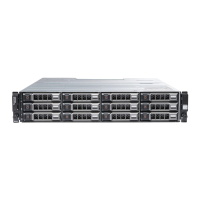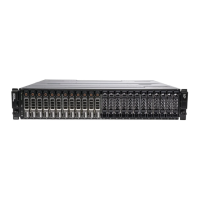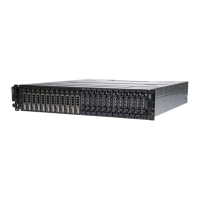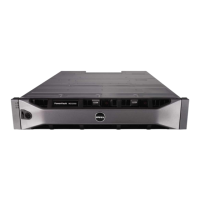22 Post Installation Tasks
Verifying Storage Array Discovery
The Automatic Discovery option automatically discovers both in-band and out-
of-band arrays and adds the storage arrays to the management domain. If the out-
of-band or in-band connections shown on the summary page are not accurate,
complete the following steps. For more information, see the online help.
1
Check the hardware and connections for possible problems. For specific
procedures on troubleshooting interface problems, see the
Owner's Manual
at
support.dell.com/manuals
.
2
Verify that the array is on the local subnetwork. If it is not, click the new
link to manually add it.
3
Verify that the status of each storage array is
Optimal
. If any array shows
an Unresponsive status, complete one of the following steps:
a
To remove the array from the management domain, highlight the
array and then click
Remove link
.
b
To add an array, click
New link
.
In Linux, click the
Manual
button and click
OK
.
4
If the array still shows an
Unresponsive
status, contact Dell.
Initial Setup Tasks
1
The name of the first storage array found appears in the
Devices
tab of the
EMW. To see a list of all storage arrays found on the local network, expand
the discovered storage arrays tab in the device pane of the EMW.
2
The default name for a newly installed MD3600f series storage array is
Unnamed
. If another name appears in MDSM, click the down arrow next
to the name and click Unnamed in the drop-down list.
3
Double-click on the discovered array to launch the array management
window and make changes to the configuration of the array.
4
Click
Perform Initial Setup Tasks
to see an outline and links to the
remaining post-installation tasks. The array is now ready to be configured.
See the
Owner’s Manual
for information about each task and to perform
the necessary configuration steps. Table 4-1 lists the recommended
configuration steps that can be accomplished using the
Owner’s Manual
.
book.book Page 22 Friday, May 20, 2011 4:07 PM

